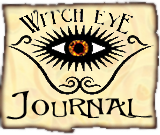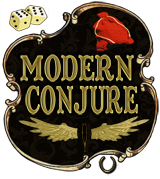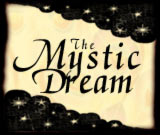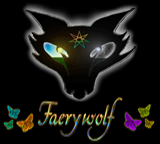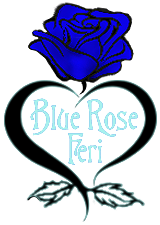 |
||
A History of Feri There are many ways to view a traditional history of what has come to be called the Feri tradition. The blind shaman and poet Victor Anderson (1917-2001) was quite adamant that Feri was a survival of the magical spirituality of the stone age little people of Britain, Scotland, and Africa, among others. That Victor drew no distinction between the roots of Feri and the most primal forms of human magic is an important point of exploration. Victor claimed to have had almost complete recall of past lives in which he lived in different cultures and held various titles of religious significance. He considered himself a Kahuna, as well as a Voudou priest, among others, based on these past life experiences. My own trance experiences have led me to the feeling that the magical current of energy that is the core of the Feri tradition is much older than humankind. Older than humanity and yet an intimate part of it; not belonging to any one particular location, era, or human culture, but the birthright of all of them. It is for this reason that I sometimes muse that Feri is a form of "postmodern witchcraft". In the one conversation I had with Victor Anderson I can say that while I cannot vouch for the validity of his claims, I can easily vouch for his uncanny ability to look deep within a person's soul and accurately describe what he found there. This ability may explain the vast differences that exist in the practices of the various lines of this tradition, as it is reported that Victor taught different outer forms to his students at different times, while maintaining a consistent inner practice and magical philosophy. This makes it impossible to determine a fundamentalist "core" of Feri tradition practice. In doing so Victor reportedly said that he was keeping the tradition "authentic". Some people consider Victor to be the "founder" of the Feri tradition, but he would not have agreed with this assessment. He considered himself a “Grand Master and a fairy chief”. He was the original voice of Feri, and he initiated some of the most influential Pagan luminaries in the Witchcraft movement today. Ultimately, all Feri initiates can trace their lineage back to him. A beautiful and engaging account of Victor's own initiation as a child can be read in Margot Adler’s book “Drawing Down the Moon”, as well as Rosemary Ellen Guiley’s “The Encyclopedia of Witches & Witchcraft”. In these he described finding a tiny, dark woman in the woods near his home in Oregon, sitting nude in a circle surrounded by several brass bowls filled with various herbs. She told him that he was a Witch, and welcomed him into the circle. He instinctively took off his clothes and she sexually initiated him causing him to have a vision in which he could see perfectly despite his almost total blindness. In it the woman became the Goddess and he saw a brilliant tropical sky overhead filled with stars. The moon was green and he was aware of the sounds and smells of a jungle all around him. Out of the jungle emerged a beautiful man, naked, effeminate and yet powerful. His phallus was erect, and he had horns and a blue flame radiated from his head. After some communications from the spirits the vision faded and the woman instructed him in the ritual use of the different herbs and teas around them, washed him in butter, oil, and salt, and he went on his way. In some accounts Victor described how he found the woman by being lured out from his home by the sound of drums, and how the woman described herself as being a fairy. She also told him that he should be patient and that he would eventually be found by others like him. The story of this childhood initiation is now thought by some to have been a trance experience, though reportedly Victor often disputed this, asserting it as a true experience. Whether we decide to believe it was a factual physical occurrence or not doesn't make it any less real or powerful, in my opinion. Witchcraft (and especially Feri) is a religion of poetry. Later, Victor would (factually) meet up with a coven of Witches in Oregon called Harpy and would be initiated into their group which practiced what has been described as a devotional science that honored the Old Gods. This newer spelling comes with an interesting etymology which is, I believe, academically false but nonetheless poetically accurate. "Feri", can be linked with such words as "ferocious" and "feral", drawing attention to Feri's wild and primal nature. Feri is often cited as being a "left hand path" which incorporates (or at least condones) practices that other "more civilized" forms of magic would rather leave alone, such as sex, and mind-altering substances. Ours is a path that utilizes the power of transgression in order to open ourselves up to universal ecstasy. As an interesting side to this discussion is the fact that one of our major teaching tools, the Iron Pentacle, reminds us of the importance of iron in human magic. Iron is represented on the periodic table of the elements by the letters "Fe". Poetically we can thus be reminded of Feri's interconnection with these qualities. The name Faery (however you choose to spell it) became accidentally attached to our tradition due mainly to the works of the late Gwydion Pendderwen, who worked with Victor in the 50's and 60's and was considered Victor and Cora’s “foster son”. He is considered by some to be another "founding member" of our tradition. Though he also practiced and taught elements of Voudu, he was primarily a student and enthusiast of Celtic lore. Because of his predominating interest in Welsh language and culture he placed an emphasis on 'Faery' as expressed through Celtic customs and folklore. With this in mind it should not be surprising to know that in Ireland, practitioners of magic, ritual, and folk-healing methods are often known as "Fairy Doctors" (similar to the term “Witch Doctor” which might be applied in a different culture). These people were believed to be working with the faeries or sometimes even thought of as being faeries themselves. It is because of this term that Faery became the name of our tradition. According to Cora Anderson in her book Fifty Years in the Feri Tradition, the original name for our tradition was "Vicia". When I would speak with her she often just referred to it as "the Craft". The Feri tradition is less about specific practices and more about energetic experience. As stated earlier, Victor's own practices were wildly divergent even to the extent of what he passed on as Feri tradition material. That being said there is a definite body of material that has grown from the initiates' relationships with the spirits and the current of power that are at the core of this path. When initiated one is brought into the full presence of this current of power, which then becomes inseparable. In some lines it is taught that this actually changes the initiate into an actual descendant of the Faery folk; a carrier of the "Faery blood". I believe that this description is poetic rather than literal although that does nothing to diminish its power or impact in my mind. Many different lineages have sprung up from the core teachings of the Andersons. While the Andersons themselves taught a wide range of material drawn from many cultural sources, others whom they have taught and initiated have taken that material in new directions... sometimes focusing on a particular culture or concept. As mentioned earlier, Gwydion Pendderwen was drawn almost exclusively to the Celtic and Voudou elements of the tradition. Gwydion’s work was bardic, shamanic, and even psychedelic. He initiated many others and his lineage became known as Watchmaker. This group is rather reclusive and not much is known of them outside their own circles. Also in the early 70’s the coven Compost was founded by Starhawk, a Feri initiate, which combined many elements from different traditions both from personal experience and through published works available at the time. Later this model would serve the basis for Reclaiming, a separate tradition which combines the spirituality of the Craft with political awareness and action. Reclaiming draws much of its core material from the Feri tradition teachings and while not all Reclaiming priest/esses are Feri, there exists an initiatory linage of Feri within their tradition. In the mid 1970’s the coven Silver Wheel was formed by Steve Hewell, Eldri Littlewolf, and the late Gabriel Carillo, which began a process of exploring many of the Feri concepts espoused by Victor and sought to refine them into workable exercises and teaching tools. Later this coven would become Korythalia, and then finally Bloodrose, a teaching coven that opened up training in Feri to a wider audience than what was previously available. The lineage of Bloodrose (and its descendant lines) represents what may be the largest faction of the Feri tradition being practiced today. Much of the practices and liturgy used throughout the tradition find their origins in the Bloodrosian line. The Draconian Pictish-Elven line was founded by Brian Dragon, an early initiate of Bloodrose. This tradition focuses on the Pictish origins/influences of Feri, as well as drawing from various inspirational sources which include Tolkein, and the poetic writings of Jim Morrison. When the coven Bloodrose broke apart amidst scandal in the late 80’s, several of its previous members joined together to form Sacred Wheel, a loose knit group of Feri teachers and students in the hopes of establishing a practicing Feri community in the San Francisco Bay Area based on the material of the previous group. After a few years this group disbanded, but they had succeeded in continuing the explorative spirit of Feri and contributed to the larger body of material of the overall tradition. Many initiates from this group have gone on to teach and continue what has now come to be seen as the Bloodrose line of Feri. One of the descendant lineages from Sacred Wheel was the NightHares line, which took the now-expanded Bloodrose influences and added upon them material from Gwydion Pendderwen, Silver Wheel, as well as teachings received directly from Victor and Cora, including elements of Tibetan and Bon shamanism. The Mandorla coven was founded by initiates of the Andersons based on their teachings from the 80’s and 90’s. Their lineage is known as Vicia which recalls an earlier form of the tradition. They are somewhat different in that they tend to initiate members first, and provide training later. Their practices are improvisational and tend to be less scripted than some other forms of the tradition. Also drawing from direct contact with the Andersons are the teachings of artist, author, and dancer Anaar (April Niino), a Feri priestess who was named the Grandmaster of Feri in the summer of 2003 by Cora Anderson. Not all lineages recognize the title or the role of Grandmaster. Those lines that that do recognize the role see it as a spiritual responsibility as opposed to a position of authority. She focuses mainly on the creative arts as a gateway into Feri, and teaches privately in the San Francisco Bay Area. Priestess Valerie Walker, a member of Compost who was originally initiated by Starhawk and then later re-initiated into the NightHares line, formed her own Feri lineage called DustBunnies which teaches a blend of Feri material from different lines in a not-for-profit setting in San Francisco. The lineage known as Blackheart derives its origins in both Feri tradition as well as the Third Road™ material (see below). It was founded by Karina who teaches mainly in the New England area, as well as long distance. From the Vanthe lineage was born FireDrake, founded by Alison Harlow and her initiate J’té Argent. FireDrake’s main focus is personal union with Elemental Beings, a relationship with the Gods, and the “Connective magick of the Great Redwoods”. J’té teaches in the Santa Cruz mountains from her home, "Dragondale". According to the website of its founder Jenya Beachy, Shapeshifter “is primarily concerned with just a few simple things: Right Action, Creativity, Discipline, Service and Laughter, empowered by: Magick, Poetry and Wisdom.” Jenya teaches in the Santa Cruz area, as well as long distance. My own line, BlueRose, stems from those of Bloodrose and Sacred Wheel. This takes the teachings and lore that I was taught and combines it with what I have learned from other branches of Feri, highlighting folkloric-faery myths and practices, conjure work, and my own shamanic and trance experiences. It takes its name both from the mythic blue rose that appears in many cultures representing the spiritual mystery, as well as from a personal vision of the Blue God as the higher self of the individual. BlueRose consists of an open outer court, an intermediary school, and an inner mystery priesthood and is taught in person in the San Francisco Bay Area, as well as long distance. Other forms of Feri have emerged that represent a distinct break in initiatory lineage from what can now be thought of as the Mother tradition. Morningstar was originally a lineage of Feri founded by T. Thorn Coyle, author of “Evolutionary Witchcraft”. While her particular teachings originated in both the Bloodrose-derived lines of Feri, Feri as taught through some lines of Reclaiming, as well as that that she received directly from Victor and Cora, it also includes elements of Sufism, and Ceremonial Magick, which has lead her to declare that her teachings are no longer a vehicle for Feri tradition, but now constitutes a separate tradition in its own right. Mentioned above was Third Road ™ a school of “Fey Shamanism” founded by Feri initiate Francesca DeGrandis. DeGrandis has taken some Feri lore and practices and focused them toward her personal vision of empowerment and healing, using a largely Celtic aesthetic. Also previously mentioned was Reclaiming which while at times does offer an initiatory lineage in Feri, does not always do so, and represents a separate tradition. This is but a sampling of individuals and lineages that have been or are currently teaching various forms of the Feri tradition. Each possesses their own unique and rich history. Feri has traditionally been an oral tradition, and the fierce solitary nature of many within the tradition has made accurate accounts of traditional history somewhat difficult to compile. This account is therefore a work in progress and will evolve as more information is brought to light. Those individuals with new information to share are welcome to contact us at info@feritradition.org. Blessed be! ©2006-2012, Storm Faerywolf
|
||
|
||












